In the mysterious depths of nature’s design, few creatures epitomize stealth and danger as perfectly as the nearly invisible venomous snakes that haunt various ecosystems around the world. These remarkable reptiles have evolved extraordinary camouflage abilities that render them virtually undetectable to both prey and potential predators—including humans who might accidentally disturb them. Their ability to blend seamlessly into their surroundings represents one of nature’s most perfect adaptations, creating a fascinating yet potentially deadly game of hide-and-seek in the wilderness. This exploration takes us into the shadowy world of one of nature’s most elusive predators: the Gaboon viper, a master of invisibility whose presence often goes unnoticed until it’s too late.
The Master of Disguise: The Gaboon Viper
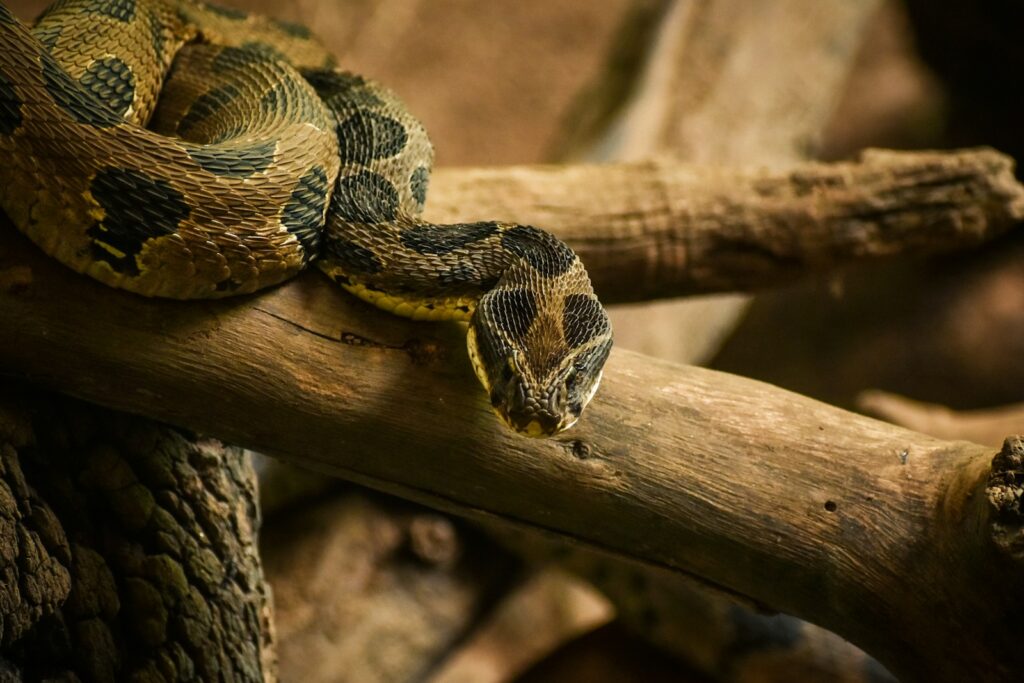
The Gaboon viper (Bitis gabonica) stands as perhaps the most perfectly camouflaged venomous snake in the world, earning its reputation as nature’s invisible assassin. Native to the rainforests and woodlands of sub-Saharan Africa, this heavyweight viper can grow to impressive lengths of up to six feet and weigh as much as 18 pounds, making it one of the heaviest venomous snakes. Its extraordinary camouflage consists of an intricate geometric pattern of browns, pinks, purples, and tans that precisely mimics the forest floor’s dead leaves, soil, and dappled sunlight. The coloration is so effective that even experienced herpetologists and bushmen have reportedly stepped directly beside or even on these snakes without noticing them until the reptile moves.
Evolutionary Marvel of Camouflage
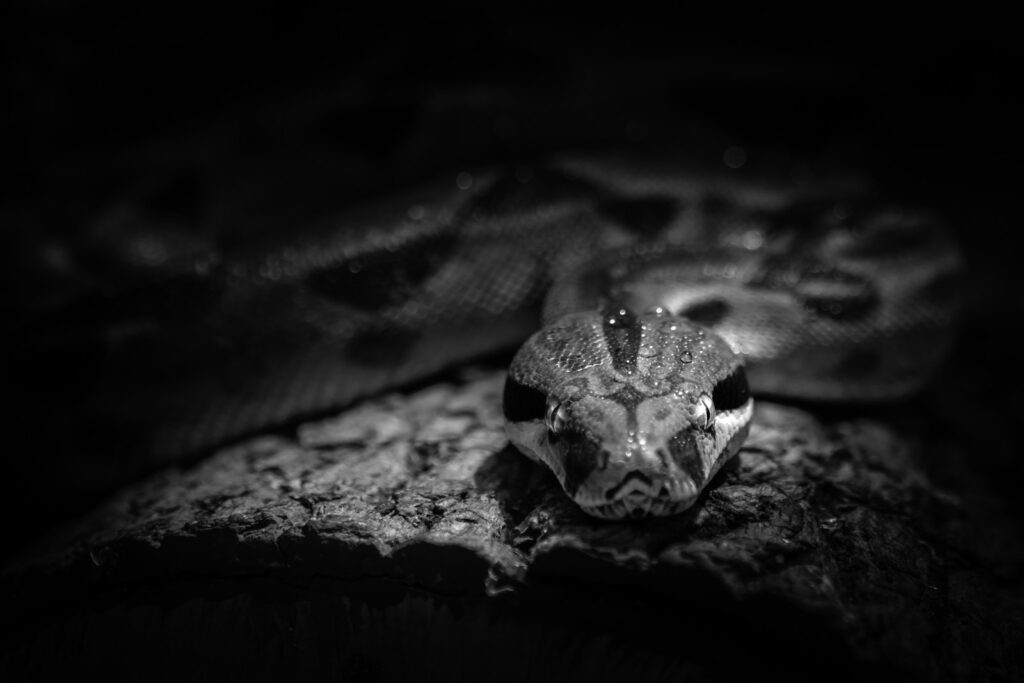
The Gaboon viper’s camouflage represents millions of years of evolutionary refinement, resulting in what many biologists consider a perfect adaptation. Unlike simpler forms of camouflage that merely match background colors, the Gaboon’s pattern incorporates disruptive coloration that breaks up its outline through complex geometric shapes that resemble leaves, shadows, and forest debris. This pattern includes rectangular blotches, hourglass markings, and subtle color gradients that create visual confusion for observers. The snake’s coloration can slightly vary depending on its specific habitat, with populations in different regions showing subtle variations that match their particular forest floor environments. Even the Gaboon’s head features a perfect leaf-like pattern, complete with what appears to be a stem and veins when viewed from above.
Record-Breaking Fangs and Venom Production
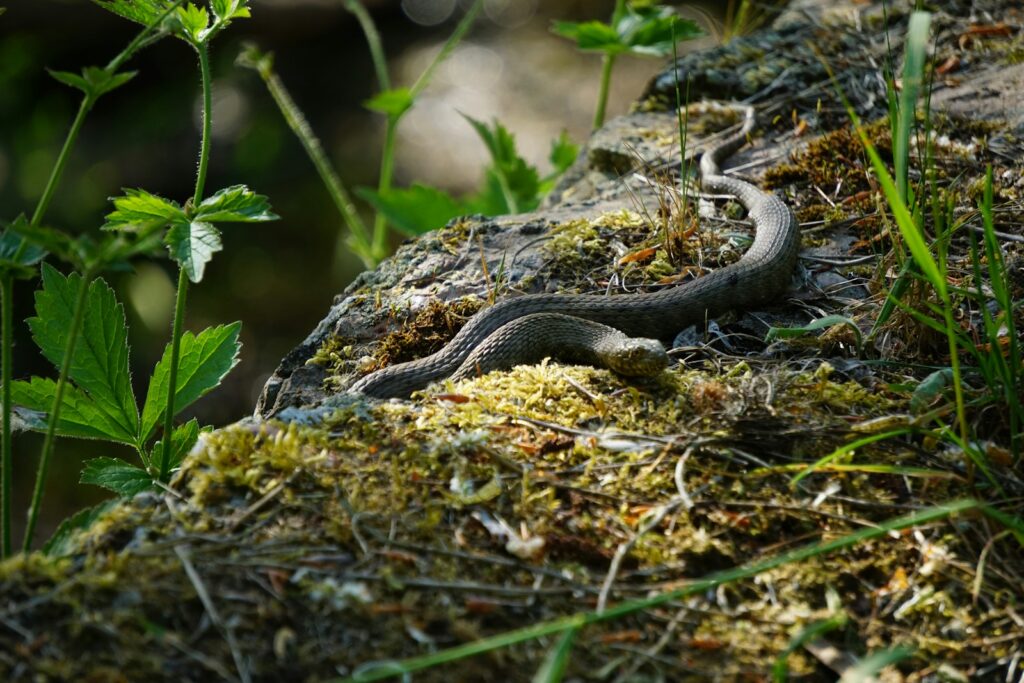
What makes the nearly invisible Gaboon viper particularly dangerous is that it possesses the longest fangs of any snake in the world, measuring up to two inches (5 cm) in length. These massive fangs are perfectly designed to deliver deep intramuscular injections of venom, bypassing the surface tissues where some venoms might be less effective. The Gaboon viper also holds another deadly record: it produces more venom than any other snake species, with a single bite potentially delivering over 600mg of venom—enough to kill several adult humans. Its venom contains a potent mixture of cytotoxins, which destroy tissue, and hemorrhagins that disrupt blood clotting, leading to massive internal bleeding in victims. The combination of perfect camouflage, enormous fangs, and massive venom yield makes an encounter with an unseen Gaboon viper potentially catastrophic.
The Ambush Hunter’s Strategy
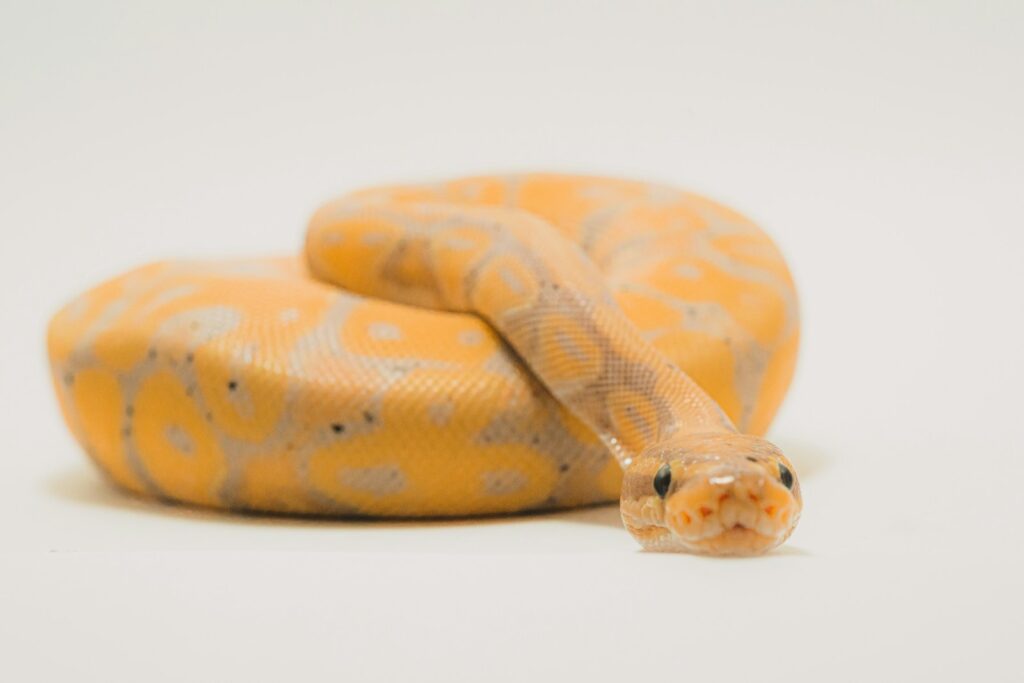
The Gaboon viper’s hunting strategy relies entirely on its remarkable camouflage, embodying the ultimate sit-and-wait predator approach. These snakes can remain motionless in the exact same position for weeks at a time, patiently waiting for prey to wander within striking distance. Their metabolic rate is extraordinarily low, allowing them to conserve energy during these long waiting periods. When potential prey approaches, the Gaboon strikes with remarkable speed, belying its otherwise sluggish nature and heavy body. After delivering a bite, the snake typically releases its prey immediately, allowing the powerful venom to do its work before trailing the dying animal and consuming it whole. This patient hunting strategy is perfectly complemented by the snake’s invisibility, creating a deadly combination that makes it one of Africa’s most efficient predators.
Habitat and Geographic Distribution
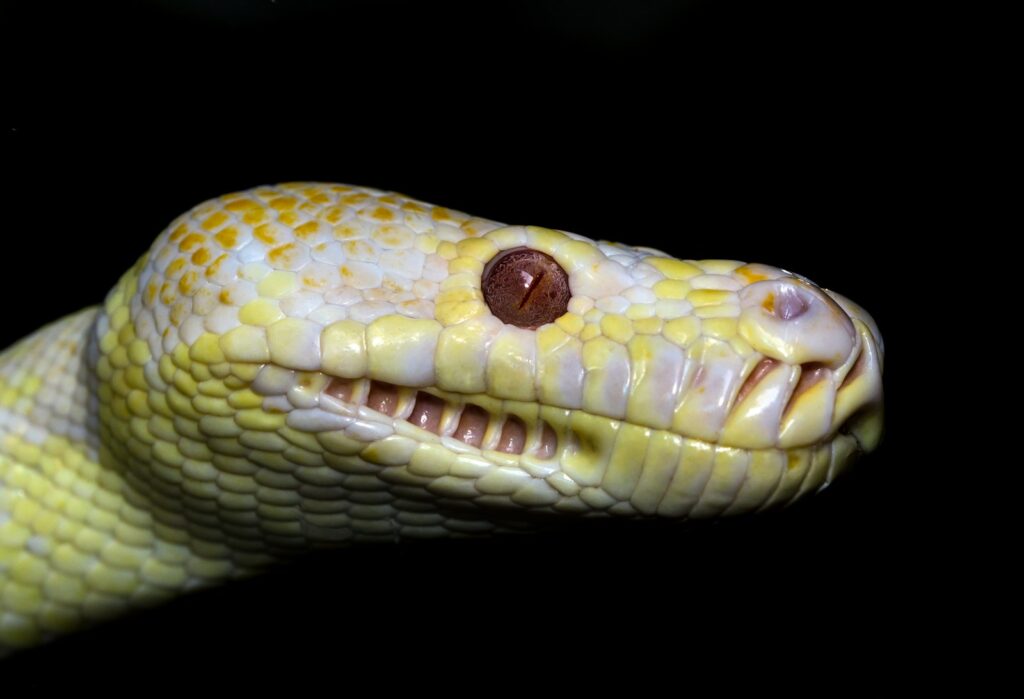
The Gaboon viper’s range extends across the tropical and subtropical forests of sub-Saharan Africa, from Guinea and Sierra Leone eastward to Uganda and Kenya, and southward to northern South Africa. These snakes show a strong preference for the leaf-littered floors of rainforests and dense woodlands where their camouflage is most effective. They’re particularly abundant in central African countries like Gabon (from which they derive their name), Cameroon, and the Democratic Republic of Congo. Interestingly, Gaboon vipers can also adapt to secondary forests and even agricultural areas adjacent to woodlands, though they avoid heavily disturbed habitats and human settlements. Their preference for undisturbed forest floor environments with thick leaf litter directly correlates with the effectiveness of their camouflage pattern, which evolved specifically to match these habitats.
Unusual Reproductive Biology
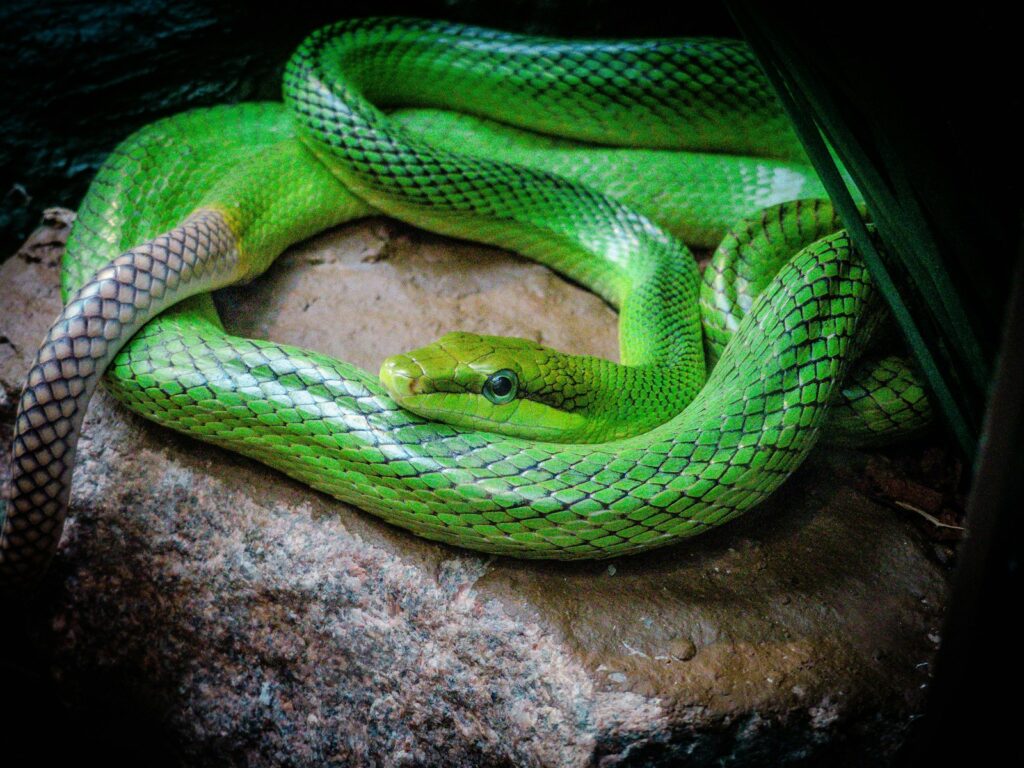
The reproductive biology of the Gaboon viper contains several surprising elements that distinguish it from many other snake species. Unlike most vipers that abandon their eggs or young, female Gaboon vipers display a form of maternal care, guarding their developing eggs until they hatch. They are ovoviviparous, meaning the females retain fertilized eggs within their bodies until the young are ready to be born alive. A single female can produce between 8-43 live young in a single birth, each measuring around 25-32 cm in length and already equipped with fully functional venom glands and camouflage. The young snakes are immediately independent and possess the same deadly invisibility as their parents, albeit in miniature form. This reproductive strategy ensures high survival rates for offspring, as they enter the world already perfectly adapted to their environment and capable of hunting within days of birth.
The Silent Breathing Adaptation
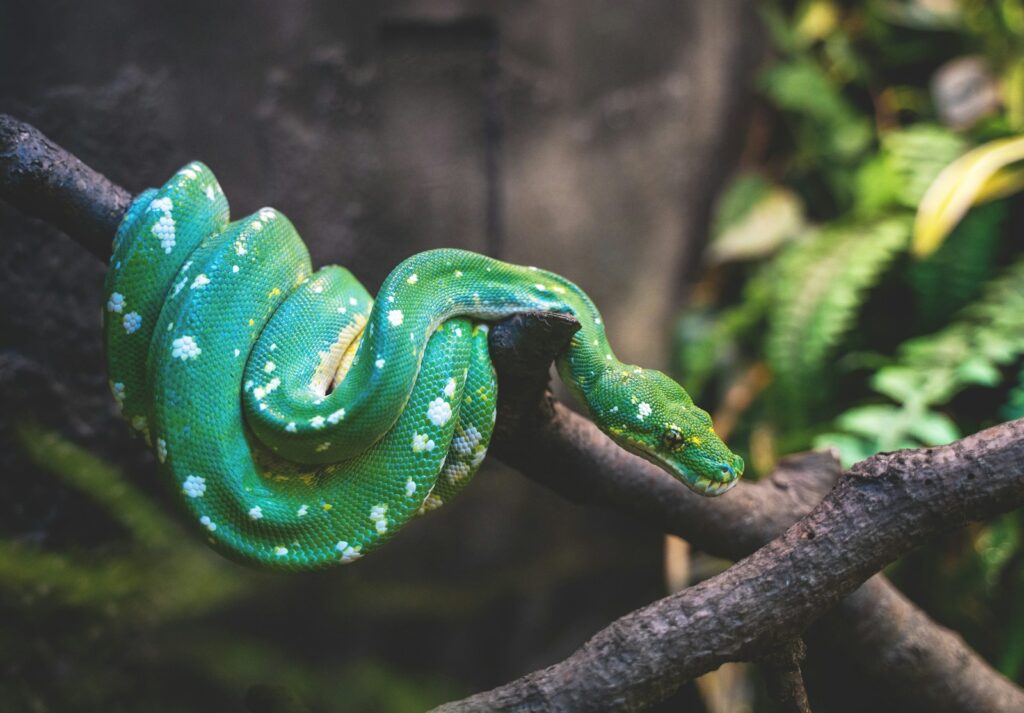
One of the most remarkable adaptations that enhances the Gaboon viper’s invisibility is its unique breathing mechanism. Unlike many snakes whose breathing creates noticeable body movements, the Gaboon viper can breathe without visibly moving its body at all. This adaptation is possible due to its specialized muscular structure that allows for lung expansion without significant external movement. The snake’s nostrils are positioned on top of its snout, allowing it to breathe while remaining nearly completely buried in leaf litter. This silent breathing adaptation means that even the subtle movement of respiration doesn’t betray the snake’s position to nearby prey or potential threats. When combined with its visual camouflage, this breathing adaptation creates a creature that effectively disappears into its environment in every sensory dimension.
Encountering the Invisible: Human Interactions
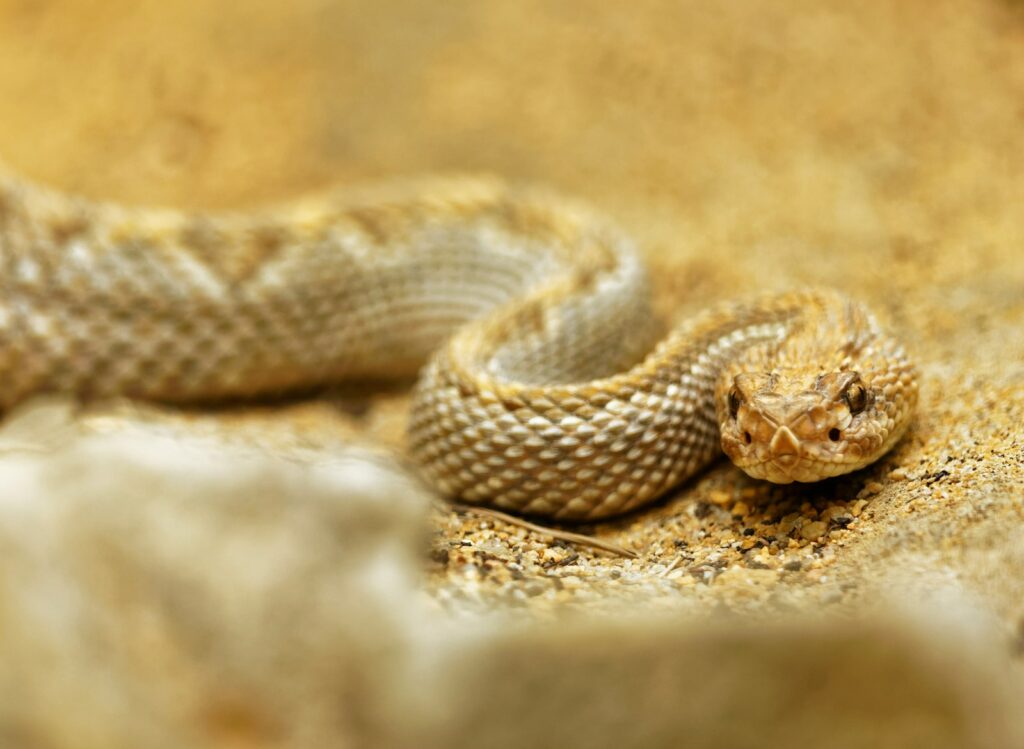
Human encounters with Gaboon vipers are relatively rare due to both the snake’s exceptional camouflage and its preference for undisturbed forest habitats. When encounters do occur, they often involve forestry workers, researchers, or local people gathering forest products who accidentally step near or on these perfectly concealed reptiles. Despite possessing potentially lethal venom, Gaboon vipers are generally considered non-aggressive and typically only bite humans when directly threatened or stepped on. Their temperament is surprisingly docile compared to many other venomous snakes, and they often prefer to rely on their camouflage rather than aggression when confronted. This reluctance to bite, combined with their remote habitat preferences, means that bites are uncommon compared to many other African vipers, though when they do occur, they constitute serious medical emergencies requiring immediate antivenom treatment.
Conservation Status and Threats
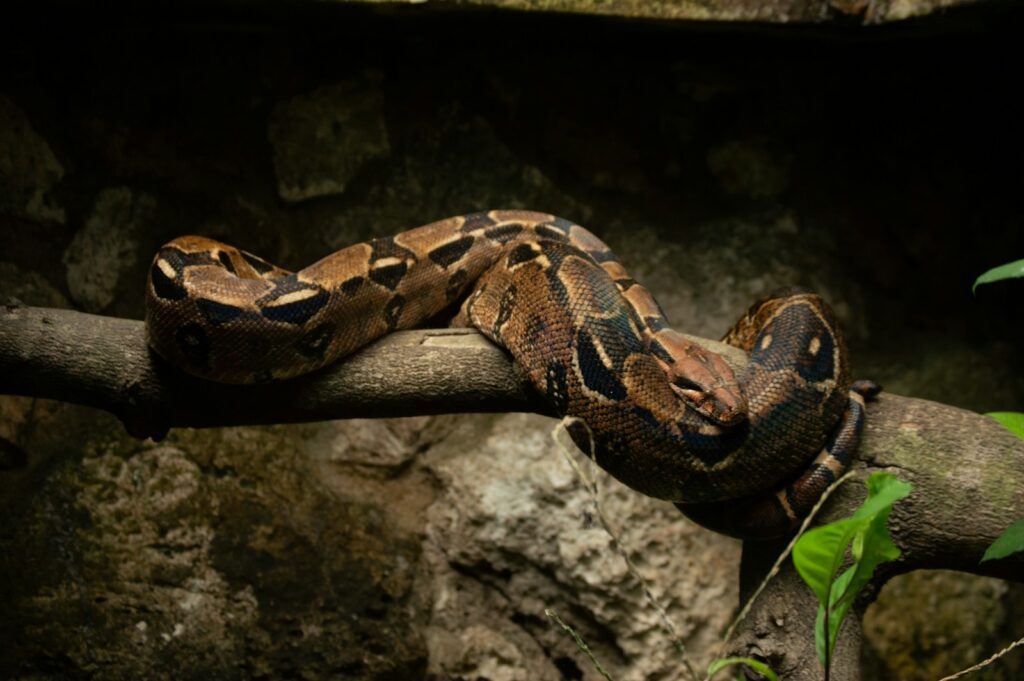
The Gaboon viper faces several significant conservation challenges despite not currently being listed as endangered. Habitat destruction represents the primary threat to these specialized forest dwellers, with large-scale deforestation across their African range eliminating the pristine forest floor environments where their camouflage functions most effectively. Bushmeat hunting also impacts Gaboon viper populations, as they’re sometimes collected for food by local communities or killed out of fear. The exotic pet trade creates additional pressure, with these impressively camouflaged snakes fetching high prices in international reptile markets. Climate change poses a longer-term threat, as shifting rainfall patterns and temperatures may alter the forest ecosystems upon which these highly specialized predators depend. Without concerted conservation efforts, these masters of invisibility may become increasingly rare sights in their native habitats.
Cultural Significance and Local Knowledge
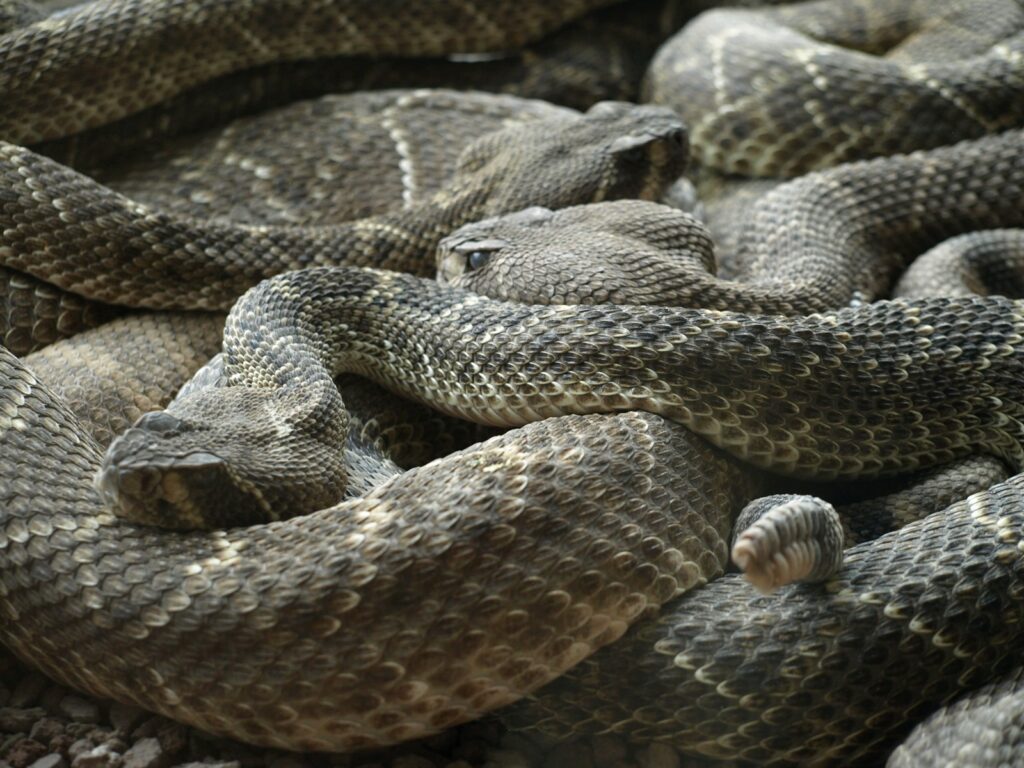
Throughout their range, Gaboon vipers hold significant cultural importance among indigenous communities who share their forest homes. Many local names for the snake translate to phrases like “leaf viper” or “the invisible death,” reflecting deep traditional knowledge of its camouflage abilities. In some cultures, the Gaboon viper features prominently in folklore as a symbol of patience, stealth, and the dangers of the forest. Traditional healers in several African regions claim to use minute quantities of Gaboon viper venom in traditional medicine, though such practices remain controversial and unverified by modern science. Perhaps most importantly, indigenous knowledge has contributed significantly to scientific understanding of these snakes, with local hunters and forest guides often proving more adept at spotting the perfectly camouflaged reptiles than trained biologists. This traditional ecological knowledge represents an invaluable resource for both conservation efforts and research into these remarkable creatures.
Scientific Research and Venom Applications
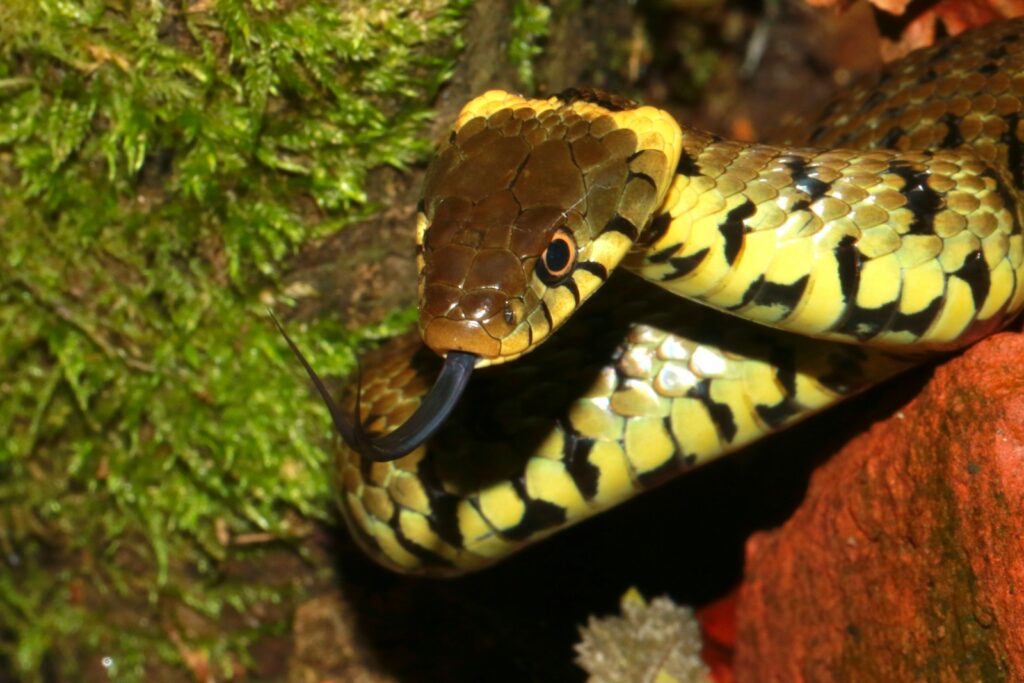
The Gaboon viper’s venom has attracted significant scientific interest due to its unique composition and potential medical applications. Researchers have identified several compounds in the venom that show promise for treating conditions related to blood clotting, including certain forms of stroke and heart disease. The hemorrhagic factors in the venom, paradoxically, might help scientists develop better anti-coagulant medications through understanding their mechanisms of action. Biologists studying the Gaboon viper’s perfect camouflage have also contributed to our understanding of visual perception and predator-prey relationships, with applications in both ecology and potentially military camouflage technology. Research on these snakes proves challenging, however, due to both their elusiveness in the wild and the dangerous nature of handling them in captivity. Despite these difficulties, ongoing studies continue to reveal new insights into these remarkable reptiles and the potential benefits their venom might offer to human medicine.
Specialized Hunting Equipment
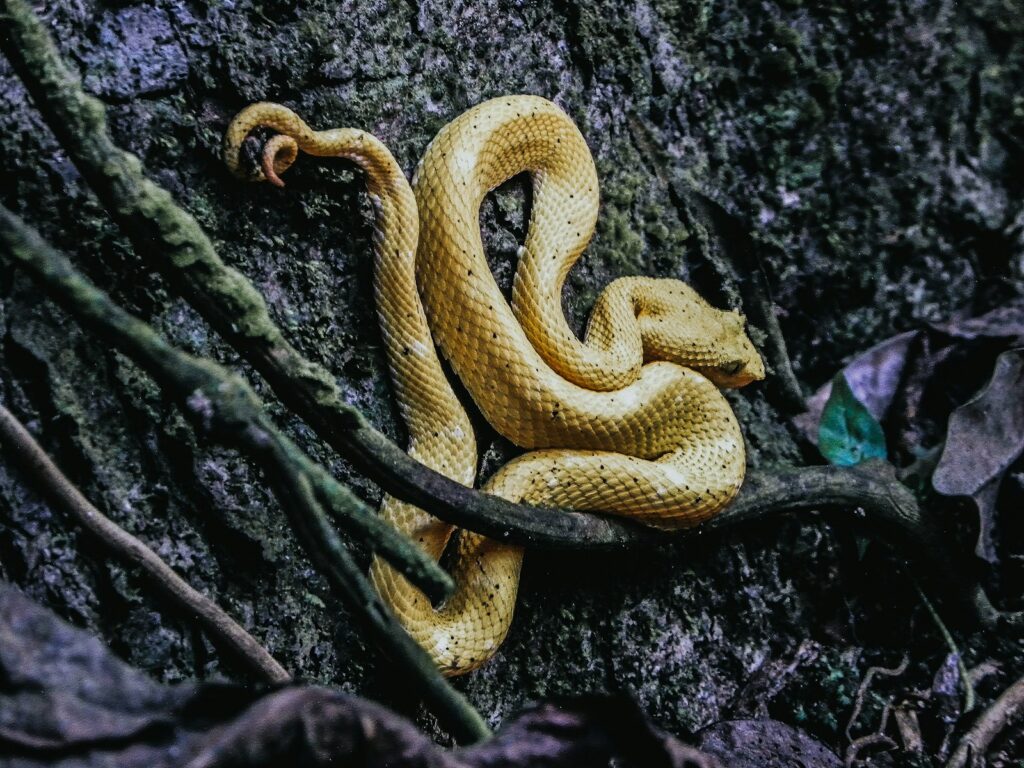
Beyond their remarkable camouflage, Gaboon vipers possess several specialized adaptations that enhance their effectiveness as ambush predators. Their heat-sensing pits, located between their eyes and nostrils, function as highly sensitive infrared detectors that can identify warm-blooded prey even in complete darkness or when the prey is hidden from view. These thermoreceptive organs can detect temperature differences as small as 0.003°C, allowing the snake to create a thermal image of its surroundings. The Gaboon’s extraordinarily flexible jaw structure permits it to consume prey up to 100% of its own body weight, with documented cases of these snakes swallowing forest antelopes and large rodents that seem impossibly large for them to consume. Their digestive system produces some of the most powerful digestive enzymes in the reptile world, capable of breaking down bones, hair, and other tissues completely within a matter of days. This combination of sensory equipment, jaw flexibility, and digestive power makes the Gaboon viper a complete predatory package hidden beneath its leaf-like exterior.
The Future of the Forest Phantom
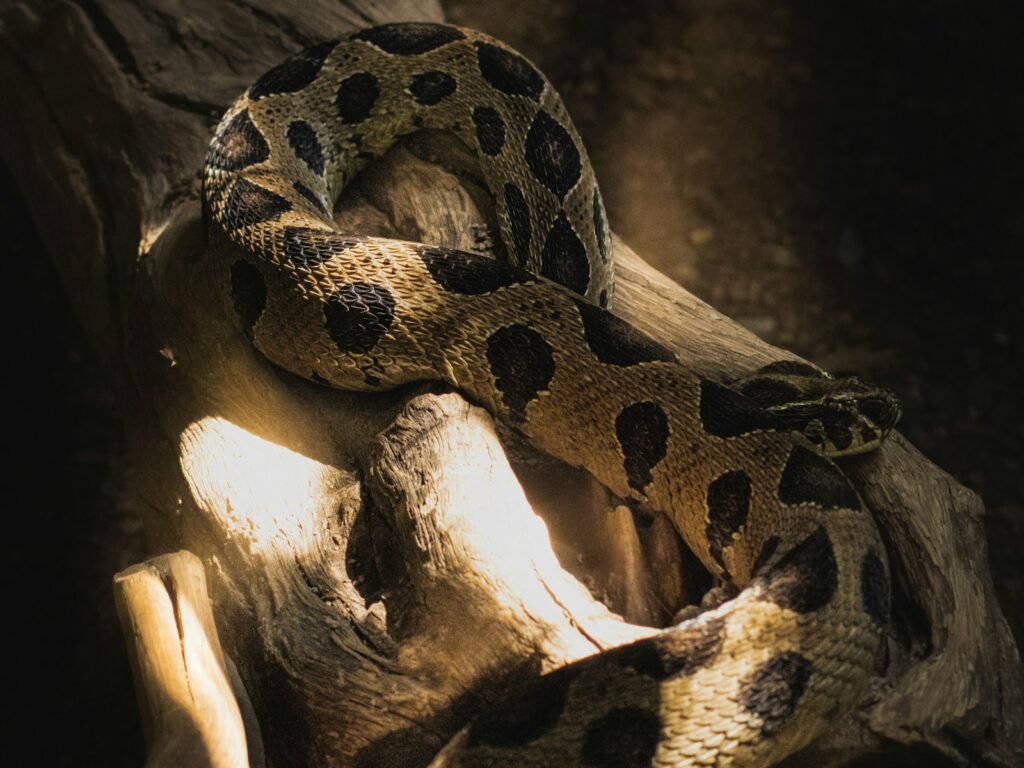
The future of the Gaboon viper remains uncertain as human activities continue to reshape the African landscapes where these remarkable snakes evolved. Conservation efforts focused on protecting intact forest ecosystems represent the best hope for ensuring these masters of camouflage persist into the future. Several wildlife reserves and national parks throughout Central and West Africa have become important havens for Gaboon viper populations, though enforcement of protection measures remains challenging in many regions. Emerging conservation approaches that involve local communities in protection efforts show promise, particularly when they incorporate traditional knowledge about the snake’s ecology. Education programs aimed at reducing fear and persecution of these non-aggressive but feared snakes also play an important role in their conservation. With adequate protection, these invisible predators may continue their ancient role in African forest ecosystems, remaining hidden in plain sight as they have for millions of years.
In the dappled light of Africa’s forests, the Gaboon viper represents nature’s perfection of the art of disappearing. Its extraordinary camouflage, combined with specialized adaptations for silent, patient hunting, has created a predator of unparalleled stealth. While their venom and size make them potentially dangerous to humans, these snakes are far more likely to remain unseen than to strike, preferring to vanish into the leaf litter than confront larger animals. As we continue to unravel the secrets of these hidden serpents, we gain not only scientific knowledge but also a deeper appreciation for the subtlety and complexity of natural selection. The invisible viper reminds us that sometimes nature’s most remarkable achievements are the ones we almost never see—perfection hiding in plain sight on the forest floor.





